Abstract
Fourteen cDNA clones of pathogenesis-related (PR) proteins, PR1a and PR1b of tobacco were obtained and classified into six groups based on restriction enzyme maps. To assign the groups to different classes of PR1 proteins, all the clones were partially sequenced and compared with amino acid sequences of PR1a and PR1b. Two groups of these corresponded to PR1a and four to PR1b. The results indicate that there are at least two kinds of PR1a mRNAs and four kinds of PR1b mRNAs. In fact, one cDNA insert hybridized to at least six to seven DNA fragments in restriction enzyme fragments of Samsun NN genomic DNA, indicating that the PR1 protein genes exist as a multigene family in the tobacco genome. Two sequences of essentially full-length cDNAs for PR1a and PR1b were determined and compared. The coding sequences of two cDNAs share 93% homology and the deduced amino acid sequences of PR1a and PR1b precursors, which are synthesized as larger precursors containing signal peptides, are 91% homologous. The homology of mature PR1a and PR1b regions is higher than that of larger precursors, 94% in the nucleotide sequence and 93% in the amino acid sequence, whereas that of the signal peptide regions is 80 and 90%, respectively. The hydropathy patterns and the secondary structures predicted by Chou-Fasman rules are similar to tomato PR protein in the half-side of the C terminus, which suggests that the half-C terminus side is important for the function of PR1 proteins.
Full text
PDF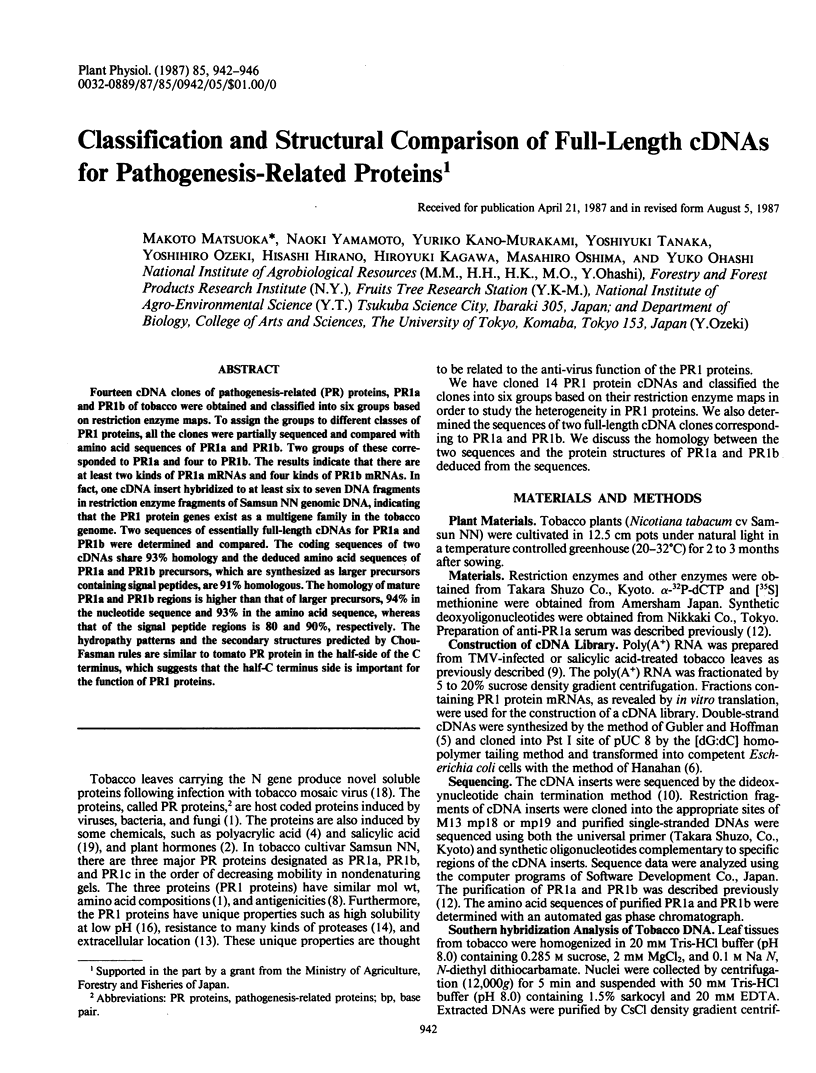
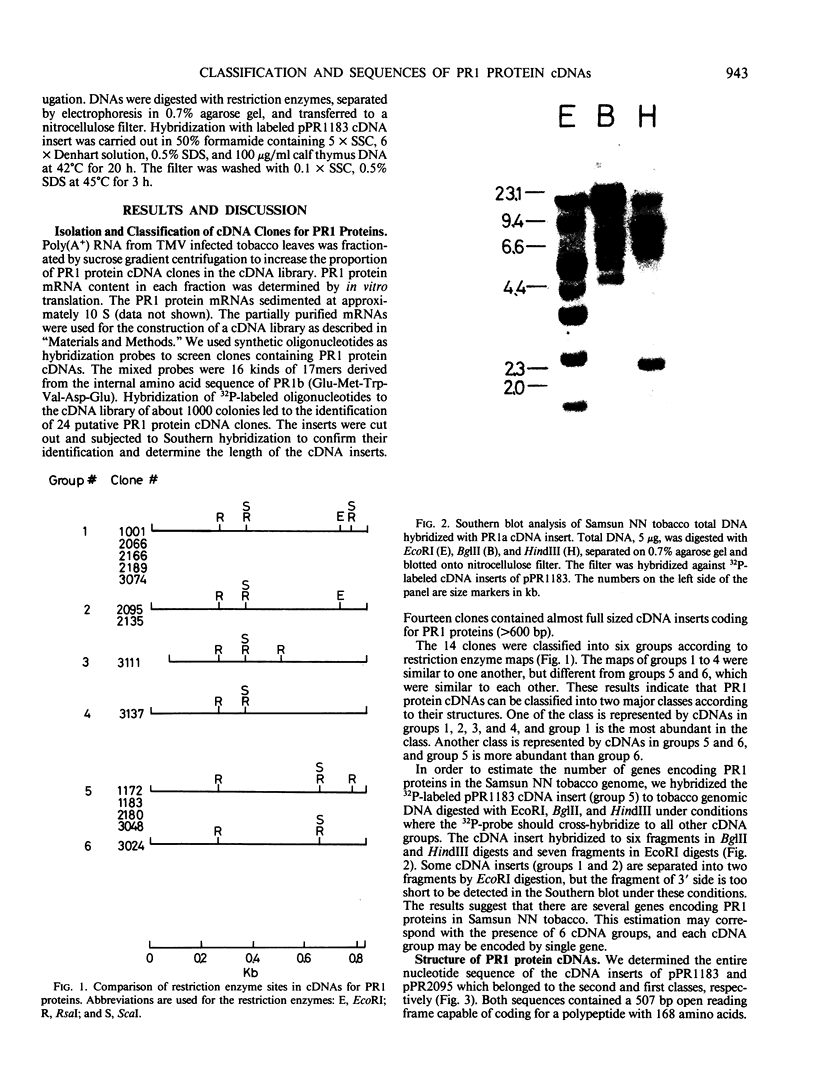
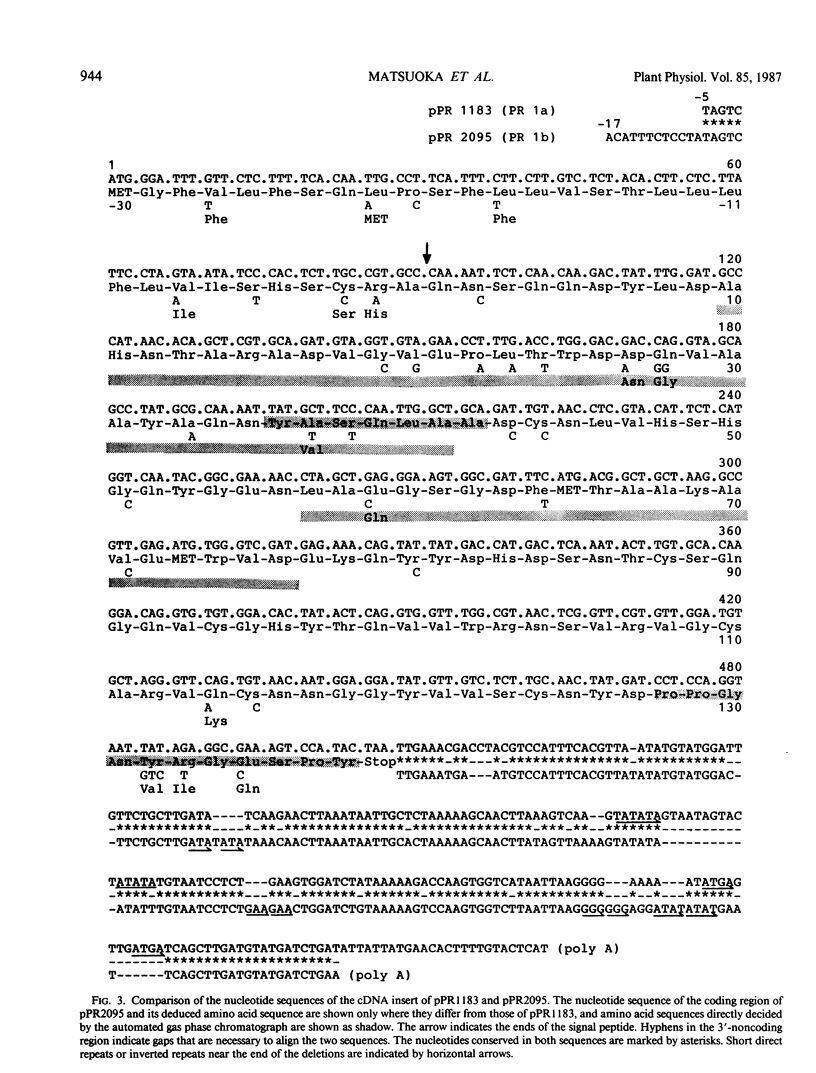
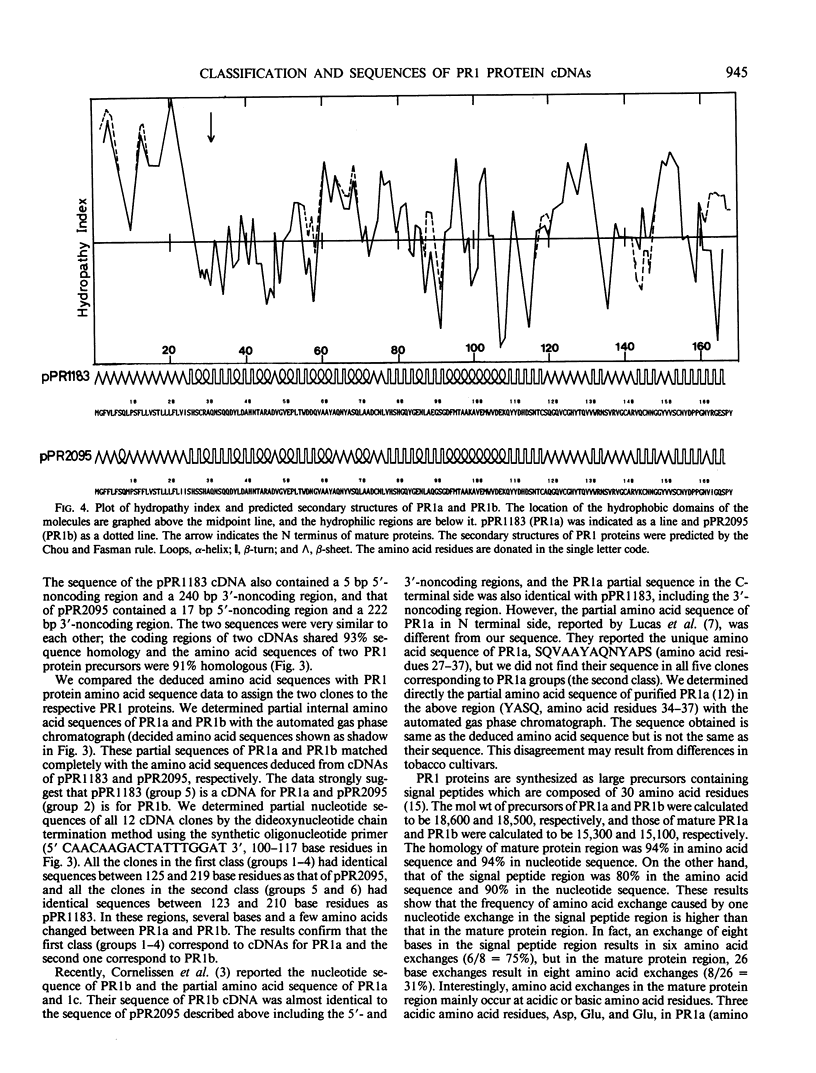
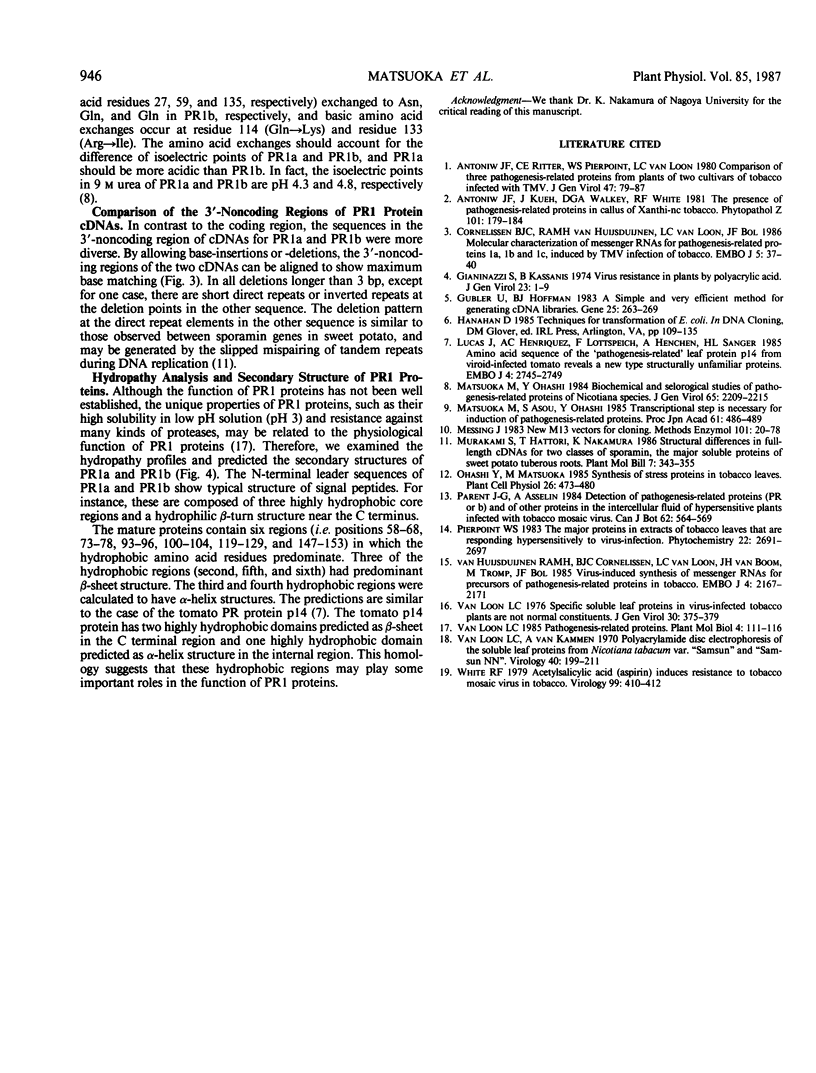
Images in this article
Selected References
These references are in PubMed. This may not be the complete list of references from this article.
- Cornelissen B. J., Hooft van Huijsduijnen R. A., Van Loon L. C., Bol J. F. Molecular characterization of messenger RNAs for 'pathogenesis related' proteins la, lb and lc, induced by TMV infection of tobacco. EMBO J. 1986 Jan;5(1):37–40. doi: 10.1002/j.1460-2075.1986.tb04174.x. [DOI] [PMC free article] [PubMed] [Google Scholar]
- Gubler U., Hoffman B. J. A simple and very efficient method for generating cDNA libraries. Gene. 1983 Nov;25(2-3):263–269. doi: 10.1016/0378-1119(83)90230-5. [DOI] [PubMed] [Google Scholar]
- Hooft van Huijsduijnen R. A., Cornelissen B. J., van Loon L. C., van Boom J. H., Tromp M., Bol J. F. Virus-induced synthesis of messenger RNAs for precursors of pathogenesis-related proteins in tobacco. EMBO J. 1985 Sep;4(9):2167–2171. doi: 10.1002/j.1460-2075.1985.tb03911.x. [DOI] [PMC free article] [PubMed] [Google Scholar]
- Lucas J., Henriquez A. C., Lottspeich F., Henschen A., Sänger H. L. Amino acid sequence of the ;pathogenesis-related' leaf protein p14 from viroid-infected tomato reveals a new type of structurally unfamiliar proteins. EMBO J. 1985 Nov;4(11):2745–2749. doi: 10.1002/j.1460-2075.1985.tb03998.x. [DOI] [PMC free article] [PubMed] [Google Scholar]
- Messing J. New M13 vectors for cloning. Methods Enzymol. 1983;101:20–78. doi: 10.1016/0076-6879(83)01005-8. [DOI] [PubMed] [Google Scholar]
- van Loon L. C., van Kammen A. Polyacrylamide disc electrophoresis of the soluble leaf proteins from Nicotiana tabacum var. "Samsun" and "Samsun NN". II. Changes in protein constitution after infection with tobacco mosaic virus. Virology. 1970 Feb;40(2):190–211. doi: 10.1016/0042-6822(70)90395-8. [DOI] [PubMed] [Google Scholar]



